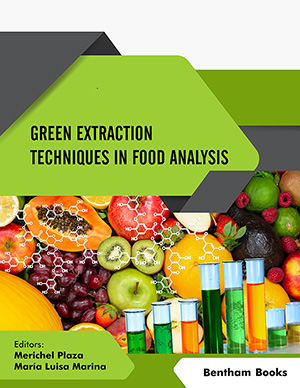Abstract
Bread as the main food all over the world is generally based on wheat flour due to its unique properties to form a three-dimensional gluten network. In fact, the quality of bread is influenced by wheat gluten quality and quantity. The quality of gluten protein is mainly defined based on its amino acids composition and bonding (covalent and non-covalent). Gluten protein quality is considered weak based on its essential amino acid content: lysine and threonine. Covalent crosslinks as the main factor in determining the integrity of the gluten network are also interrupted by the activity of proteolytic enzymes and reducing agents. Different treatments (physical, chemical and enzymatic) are used to alleviate these detrimental effects and improve the bread making quality of wheat flour. Given that, food industry is looking for using enzymes (respecting their specificity, ease of use and low risk of toxic products formation) microbial transglutaminase is an efficient option, considering its ability to introduce new crosslinks. This new crosslink formation can either improve gluten protein quality in damaged wheat flour or imitate the function of gluten protein in gluten free bread. The aim of this article is to review the application of microbial transglutaminase enzyme as an improving agent in wheat bread industry.
Keywords: Wheat bread, transglutaminase, gluten, enzyme, function, application.
[http://dx.doi.org/10.1016/j.jcs.2009.04.001]
[http://dx.doi.org/10.1016/j.tifs.2004.02.011]
[http://dx.doi.org/10.1016/j.tifs.2015.10.005]
[http://dx.doi.org/10.1016/j.fm.2006.07.004] [PMID: 17008153]
[http://dx.doi.org/10.1016/j.tifs.2006.11.003]
[http://dx.doi.org/10.1016/j.lwt.2016.12.030]
[http://dx.doi.org/10.1016/j.foodres.2003.08.001]
[http://dx.doi.org/10.1111/1541-4337.12259]
[http://dx.doi.org/10.1016/j.jcs.2004.12.006]
[http://dx.doi.org/10.1007/s00253-003-1539-5] [PMID: 14740191]
[http://dx.doi.org/10.1007/s12223-013-0287-x] [PMID: 24198201]
[http://dx.doi.org/10.1111/j.1745-4603.2006.00042.x]
[PMID: 8099353]
[http://dx.doi.org/10.1016/j.clim.2018.12.008] [PMID: 30543926]
[http://dx.doi.org/10.1016/j.tifs.2017.02.015]
[http://dx.doi.org/10.1021/acs.jafc.7b02414] [PMID: 28721717]
[http://dx.doi.org/10.1080/08905436.2013.870076]
[http://dx.doi.org/10.1080/10408398.2014.945990] [PMID: 25897817]
[http://dx.doi.org/10.1094/CC-83-0028]
[http://dx.doi.org/10.1016/j.jfoodeng.2009.11.002]
[http://dx.doi.org/10.1016/j.ab.2020.113584] [PMID: 31953047]
[http://dx.doi.org/10.1111/1750-3841.13612] [PMID: 28140462]
[http://dx.doi.org/10.1371/journal.pone.0013264] [PMID: 20948997]
[http://dx.doi.org/10.1038/s41598-017-00174-z] [PMID: 28250436]
[http://dx.doi.org/10.1111/j.1365-2036.2009.04053.x] [PMID: 19485977]
[http://dx.doi.org/10.1016/j.jiec.2014.06.013]
[http://dx.doi.org/10.1016/j.bbadis.2004.06.009] [PMID: 15511629]
[http://dx.doi.org/10.1016/j.jcs.2007.05.004]
[http://dx.doi.org/10.1053/j.gastro.2007.06.023] [PMID: 17678925]
[http://dx.doi.org/10.1189/jlb.0412182] [PMID: 23108099]
[http://dx.doi.org/10.1016/j.jfoodeng.2007.04.016]
[http://dx.doi.org/10.1016/S0924-2244(02)00278-9]
[http://dx.doi.org/10.1016/j.jcs.2006.10.003]
[http://dx.doi.org/10.1201/b11204]
[http://dx.doi.org/10.1080/87559120701418368]
[http://dx.doi.org/10.1016/j.jcs.2017.08.003]
[http://dx.doi.org/10.1016/j.foodres.2015.05.051] [PMID: 28454949]
[http://dx.doi.org/10.1111/j.1750-3841.2006.00001.x]
[http://dx.doi.org/10.1007/s11947-017-1869-4]
[http://dx.doi.org/10.1111/j.1365-2621.2003.tb07045.x]
[http://dx.doi.org/10.2202/1556-3758.2158]
[http://dx.doi.org/10.3136/fstr.6.151]
[http://dx.doi.org/10.1021/jf00056a004]
[http://dx.doi.org/10.1271/bbb.60.131]
[http://dx.doi.org/10.1093/jn/126.10.2557] [PMID: 8857517]
[http://dx.doi.org/10.1021/bi200987b] [PMID: 22257032]
[http://dx.doi.org/10.1016/S0924-2244(98)00038-7]
[http://dx.doi.org/10.1081/FRI-100001258]
[http://dx.doi.org/10.1016/j.jcs.2007.07.011]
[http://dx.doi.org/10.1007/s10068-010-0133-8]
[http://dx.doi.org/10.1016/j.foodhyd.2013.09.004]
[http://dx.doi.org/10.1094/CCHEM-85-3-0301]
[http://dx.doi.org/10.1016/j.foodres.2008.07.013]
[http://dx.doi.org/10.1094/CCHEM-07-11-0082]
[http://dx.doi.org/10.1007/s11947-011-0538-2]
[http://dx.doi.org/10.1094/CC-82-0425]
[http://dx.doi.org/10.1094/CCHEM.2001.78.1.26]
[http://dx.doi.org/10.1007/s11947-008-0080-z]
[http://dx.doi.org/10.1016/j.lwt.2012.10.020]
[http://dx.doi.org/10.1007/s11947-010-0396-3]
[http://dx.doi.org/10.2174/1573401312666160909162441]






















